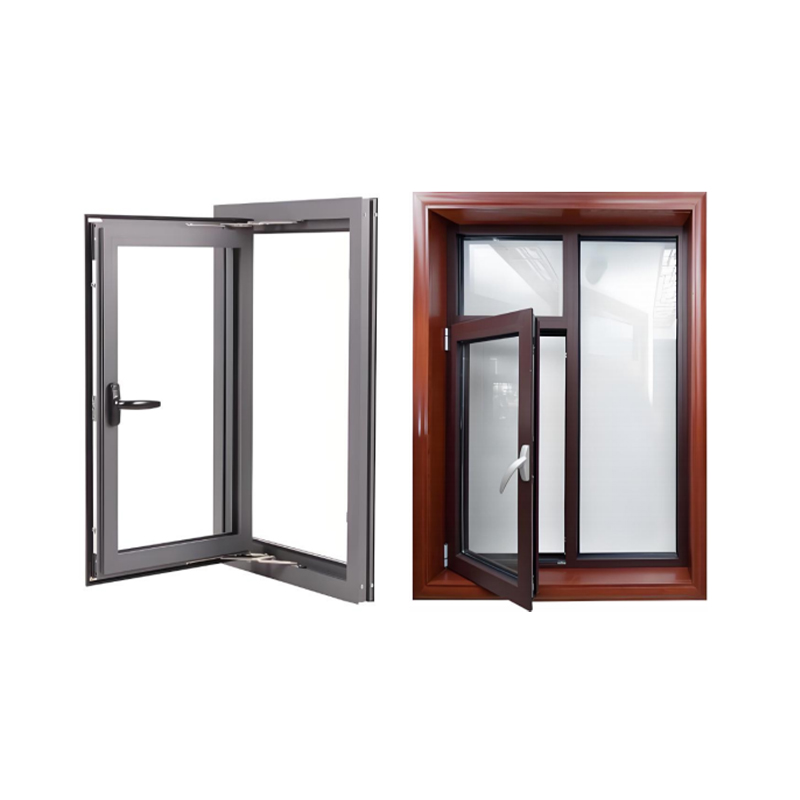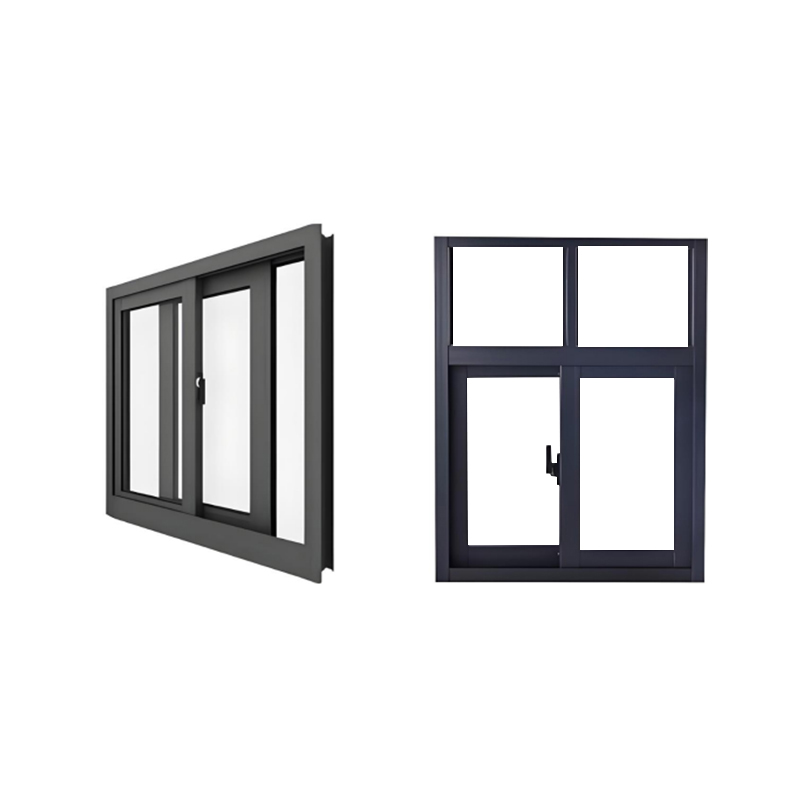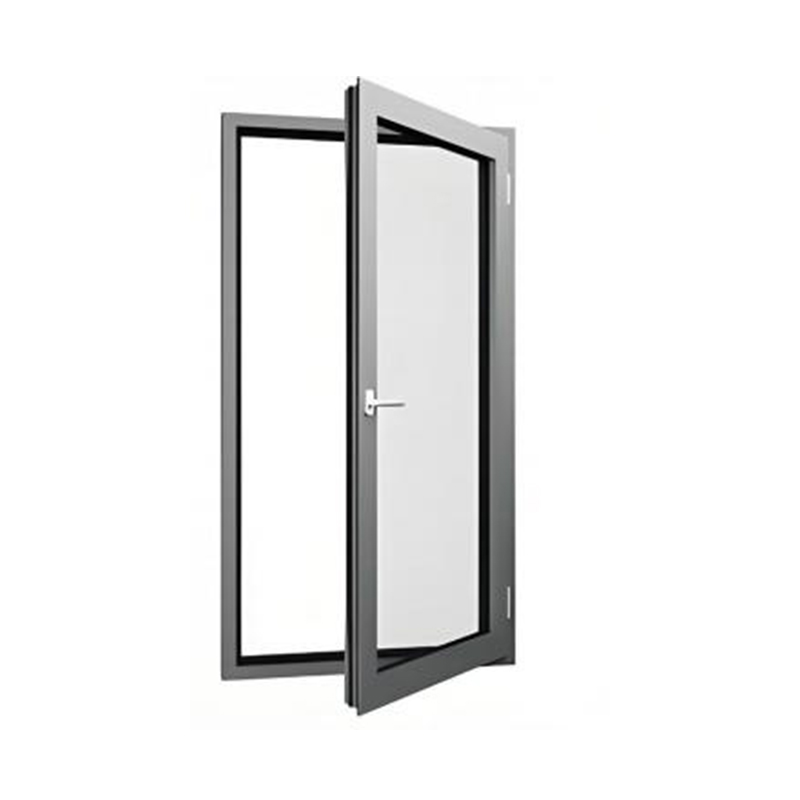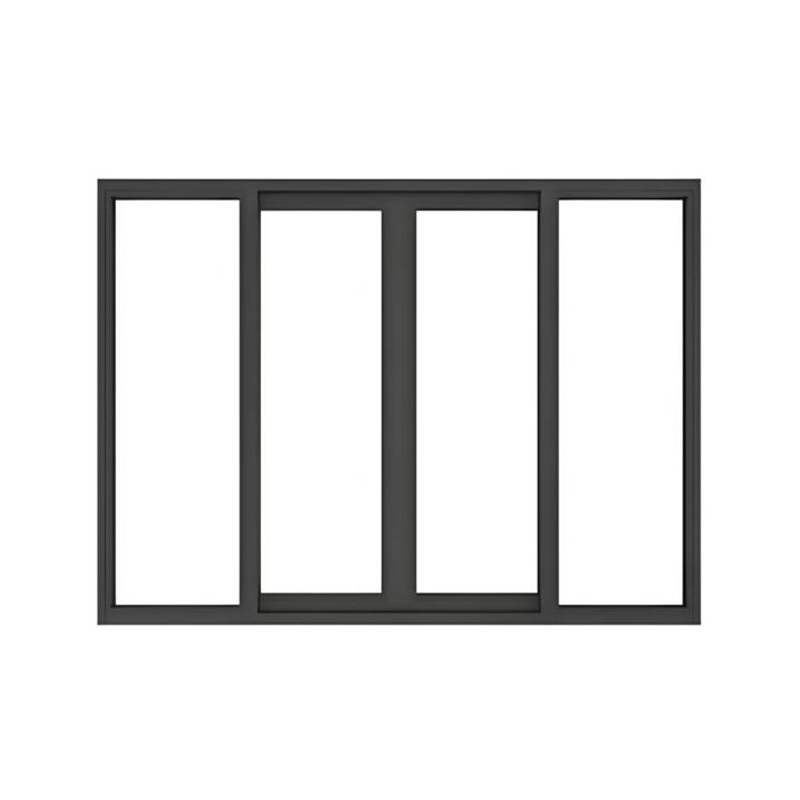How do level-out windows improve the natural lighting effect in the room through design?
Release Time : 2025-07-09
Level-out windows greatly improve the natural lighting effect in the room through its unique design, bringing a brighter and more comfortable indoor environment to the residents. This kind of window not only optimizes the way of introducing light, but also cleverly utilizes the characteristics of architectural design to fill the entire space with sunlight, creating a warm and pleasant atmosphere.
First of all, level-out windows are usually installed on the wall at a higher position in the room. This layout can effectively capture the sunlight at different times of the day. Because the sun's rays shine from different angles in the sky, level-out windows can continuously receive natural light from the outside from morning to evening. Compared with traditional vertical windows, it can better disperse light and reduce shadow areas, so that the whole room is bathed in soft natural light. This evenly distributed light not only improves visual comfort, but also reduces dependence on artificial lighting, saving energy and reducing electricity bills.
Secondly, the design of level-out windows takes into account the path and direction of light entering the room. High-quality glass materials have good light transmittance and can maximize the light transmission without distortion. In addition, some modern level-out windows use low-emissivity coating technology, which can ensure efficient transmission of light while effectively blocking ultraviolet and infrared rays, protecting indoor items from fading or overheating. Therefore, even in the hot summer, you can enjoy sufficient natural light without worrying about the indoor temperature being too high.
The width and length of level-out windows can be customized according to specific needs, which makes them adaptable to a variety of different building structures and space requirements. The spacious window design increases the area for light to enter, further enhancing the brightness of the room. At the same time, in order to better control the intensity of light, many level-out windows are equipped with adjustable sunshades or blinds. These devices can adjust the angle and intensity of light when needed, which can keep the room bright while providing necessary shielding when strong sunlight is directly shining, avoiding glare from interfering with daily life.
In addition to the physical design advantages, level-out windows can also enhance the well-being of residents through psychological effects. Studies have shown that sufficient natural light can help improve people's mental state, reduce depression, and promote the synthesis of vitamin D. For those who stay indoors for a long time, a space with good lighting conditions is particularly important. The natural light brought by level-out windows not only illuminates every corner, but also creates a sense of openness and connection, making people feel closely connected to the outside world and enjoy the beauty of nature.
In terms of architectural design, level-out windows are often combined with other elements to build a harmonious and unified whole. For example, in an open floor plan, level-out windows can span multiple rooms, forming a continuous flow of light and enhancing the sense of integration of the space. In addition, by integrating level-out windows with ceilings or other high structures, unique light and shadow effects can be created. As the time of day changes, constantly moving light and shadow patterns will appear in the room, adding a dynamic beauty and artistic atmosphere.
Another advantage that cannot be ignored is the way level-out windows deal with privacy. Since such windows are usually located at a higher position, it is difficult for pedestrians to directly peek into the indoor situation from the outside, so occupants do not need to worry about privacy leaks. At the same time, they can still let in enough light to ensure that the interior is bright and transparent. This design cleverly balances the relationship between openness and privacy, meeting people's needs for safety and comfort.
Finally, it is worth mentioning that level-out windows contribute to environmental protection. As the world pays more and more attention to sustainable development, more and more construction projects are beginning to focus on green design. As an energy-saving measure, level-out windows reduce the need for electric lights during the day by maximizing the use of natural light, thereby reducing carbon emissions. At the same time, high-quality thermal insulation also helps to maintain a stable indoor temperature, reduce the burden on the air-conditioning system, and achieve the goal of energy conservation and emission reduction.
In short, level-out windows significantly improve the natural lighting effect in the room through its careful design and multifunctional characteristics. It can bring many benefits to residents both physically and psychologically, including better visual experience, a healthy living environment, and a higher quality of life. With the advancement of technology and the continuous innovation of design concepts, level-out windows will continue to play an important role in future architectural design and create a better living space for people.
First of all, level-out windows are usually installed on the wall at a higher position in the room. This layout can effectively capture the sunlight at different times of the day. Because the sun's rays shine from different angles in the sky, level-out windows can continuously receive natural light from the outside from morning to evening. Compared with traditional vertical windows, it can better disperse light and reduce shadow areas, so that the whole room is bathed in soft natural light. This evenly distributed light not only improves visual comfort, but also reduces dependence on artificial lighting, saving energy and reducing electricity bills.
Secondly, the design of level-out windows takes into account the path and direction of light entering the room. High-quality glass materials have good light transmittance and can maximize the light transmission without distortion. In addition, some modern level-out windows use low-emissivity coating technology, which can ensure efficient transmission of light while effectively blocking ultraviolet and infrared rays, protecting indoor items from fading or overheating. Therefore, even in the hot summer, you can enjoy sufficient natural light without worrying about the indoor temperature being too high.
The width and length of level-out windows can be customized according to specific needs, which makes them adaptable to a variety of different building structures and space requirements. The spacious window design increases the area for light to enter, further enhancing the brightness of the room. At the same time, in order to better control the intensity of light, many level-out windows are equipped with adjustable sunshades or blinds. These devices can adjust the angle and intensity of light when needed, which can keep the room bright while providing necessary shielding when strong sunlight is directly shining, avoiding glare from interfering with daily life.
In addition to the physical design advantages, level-out windows can also enhance the well-being of residents through psychological effects. Studies have shown that sufficient natural light can help improve people's mental state, reduce depression, and promote the synthesis of vitamin D. For those who stay indoors for a long time, a space with good lighting conditions is particularly important. The natural light brought by level-out windows not only illuminates every corner, but also creates a sense of openness and connection, making people feel closely connected to the outside world and enjoy the beauty of nature.
In terms of architectural design, level-out windows are often combined with other elements to build a harmonious and unified whole. For example, in an open floor plan, level-out windows can span multiple rooms, forming a continuous flow of light and enhancing the sense of integration of the space. In addition, by integrating level-out windows with ceilings or other high structures, unique light and shadow effects can be created. As the time of day changes, constantly moving light and shadow patterns will appear in the room, adding a dynamic beauty and artistic atmosphere.
Another advantage that cannot be ignored is the way level-out windows deal with privacy. Since such windows are usually located at a higher position, it is difficult for pedestrians to directly peek into the indoor situation from the outside, so occupants do not need to worry about privacy leaks. At the same time, they can still let in enough light to ensure that the interior is bright and transparent. This design cleverly balances the relationship between openness and privacy, meeting people's needs for safety and comfort.
Finally, it is worth mentioning that level-out windows contribute to environmental protection. As the world pays more and more attention to sustainable development, more and more construction projects are beginning to focus on green design. As an energy-saving measure, level-out windows reduce the need for electric lights during the day by maximizing the use of natural light, thereby reducing carbon emissions. At the same time, high-quality thermal insulation also helps to maintain a stable indoor temperature, reduce the burden on the air-conditioning system, and achieve the goal of energy conservation and emission reduction.
In short, level-out windows significantly improve the natural lighting effect in the room through its careful design and multifunctional characteristics. It can bring many benefits to residents both physically and psychologically, including better visual experience, a healthy living environment, and a higher quality of life. With the advancement of technology and the continuous innovation of design concepts, level-out windows will continue to play an important role in future architectural design and create a better living space for people.







